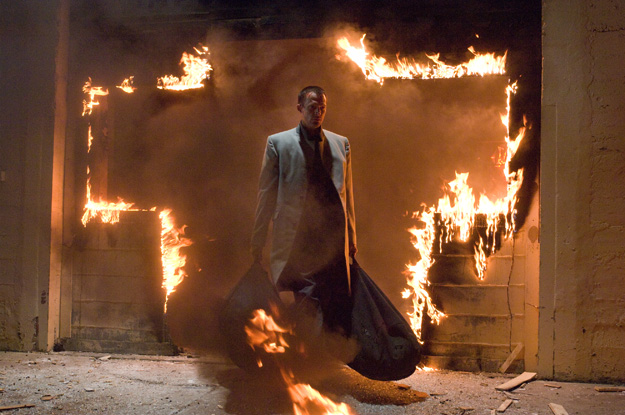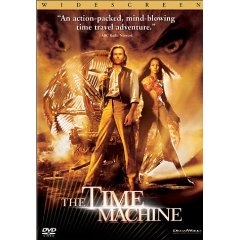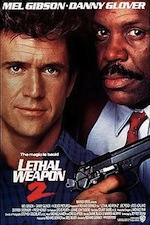 When last we met, we covered the evolution of various supernatural critters from detestable to desirable. Vampires are a particularly striking example of an archetype that began as walking, rotting corpses, and rose to be portrayed as superior to humans in almost every way. And now, with Warm Bodies, zombies have begun to travel the same road. But as this happens, producers of fiction lose a useful tool in the form of a creature that can be killed without remorse. This leaves writers searching for a new archetype to fill the role of humanity’s enemy. Sometimes what they come up with is surprising.
When last we met, we covered the evolution of various supernatural critters from detestable to desirable. Vampires are a particularly striking example of an archetype that began as walking, rotting corpses, and rose to be portrayed as superior to humans in almost every way. And now, with Warm Bodies, zombies have begun to travel the same road. But as this happens, producers of fiction lose a useful tool in the form of a creature that can be killed without remorse. This leaves writers searching for a new archetype to fill the role of humanity’s enemy. Sometimes what they come up with is surprising.
Writer/director Tommy Wirkola has found an unlikely replacement:
witches. His latest work, Hansel & Gretel: Witch Hunters, starts out with an abridged retelling of the classic children’s tale of two kids who are apparently abandoned in the woods, find a house made of candy, and are captured by a hideous, cannibalistic crone, until they knock her into her own oven. This refresher is graphic, brutal, and not for children. Hansel and Gretel then vow to spend their lives hunting down and killing witches, and we are treated to a montage of newspaper clippings and wood-cut drawings, showing their exploits over the next fifteen years.
We don’t have to think much for this movie. Hansel (Jeremy Renner) narrates “We learned two important things that day (when they escaped the witch as children). One, never walk into a house made of candy. And two, if you’re going to kill a witch, set her ass on fire.†Good advice.
The main story deals with the twins working a case in Augsburg, investigating the disappearances of 11 children. The witches in this movie display many of the traits we’ve seen in vampires and werewolves in recent years: super human strength (why? Because it’s cool), animal-like movements (why? Because it’s cool), and an apparent black belt in jujitsu (why? … must you ask?). Hansel and Gretel (Gemma Arterton) save a beautiful young woman named Mina (Pihla Viitala) from being wrongfully executed as a witch. Hansel announces to the obligatory mob of villagers that when a woman engages in the black arts, a nasty rot sets in. That’s right, the witches in this movie are essentially walking, rotting corpses. Sound familiar?
Is it a good movie? No. But the real questions is how well do the witches satisfy that part of us that just wants to weild a shotgun, as zombies used to do for us? The best thing about this movie is that it’s not afraid to be politically incorrect. The witches are plentiful. They’re ugly. And they’re decidedly unsympathetic. They’re a bit harder to kill than zombies, but the writers always find a way. All this movie really is is a big, silly bonanza of over-the-top stunts, awesome weapons that could never exist and dazzling fireballs. (It’s even sillier than Van Helsing, if you can believe that). It’s the kind of movie where people get knocked through walls, jump up and keep fighting. It doesn’t need to be good; it’s a blast.
But are the witches really all subhuman monsters? Are there none we can identify with? Are all those female
movie goers who spent their teen years fantasizing about being witches and making love potions going to be left out in the cold?
Well, we eventually learn that, in fact, Mina is a witch, a “white witch†who uses her powers for “good.†Good witches don’t have the rot set in. So how do we tell a good witch from a bad? We look at their outward appearance. How delightfully shallow. Of course, even Mina admits that there are not many good witches, so the good news is most of the witches are just going to be fodder for the awesome fight scenes.
To be fair, there are some clever ideas in this movie, such as the glass milk bottles that bear pictures of the missing children, or the subplot in which Hansel has to take an insulin shot every day, due to all the candy the witch made him eat as a child to fatten him up. There is also a fresh take on the reason the twins’ parents abandoned them in the forest that fateful night. But this is also one of the nastiest movies I have ever seen. Not only is it excessively gory, but the subject matter is pretty intense. There are graphic scenes of children being starved and terrorized by the witches (I understand there were some scenes cut out that were even worse) and one of a witch magically forcing a teen boy to shoot his own mother. Rape is also hinted at. After all, the original “children’s tale†is pretty nasty when you think about it. The Brothers Grimm tended to live up to their name.
I expect witches’ time on popular fiction’s crap list will be briefer than that of some other creatures, if only because we’re so accustomed to seeing pretty witches save the day. So what’s going to come next? Maybe vampires will cycle around for another run. Personally, I think I’ll stick with my old standby: zombies.
[Rating:2.5/5]






















 In 1894, H.G. Wells published his novel The Time Machine, which, while short and simplistic, was in interesting thought experiment regarding mankind’s hopes for the future. Wells, a student of Marx, expressed a belief through metaphor that there could never be true equality, and there would always be those above, and those who served them. None the less, he told an ironic tale of how those on top would eventually get theirs.
In 1894, H.G. Wells published his novel The Time Machine, which, while short and simplistic, was in interesting thought experiment regarding mankind’s hopes for the future. Wells, a student of Marx, expressed a belief through metaphor that there could never be true equality, and there would always be those above, and those who served them. None the less, he told an ironic tale of how those on top would eventually get theirs. 1960. A second version, starring Guy Pierce and Directed by Simon Wells, H.G.’s grandson, was released in 2002. I have yet to meet someone, besides me, who has read/seen all three versions, which is really too bad. People often ask me which version is the best. The truth is, it’s really hard to pick one, because they are all so different, and each one is strangely apropriate to their time. You might say, reading the book and then watching the movies is a trip through time in itself. I’ll explain.
1960. A second version, starring Guy Pierce and Directed by Simon Wells, H.G.’s grandson, was released in 2002. I have yet to meet someone, besides me, who has read/seen all three versions, which is really too bad. People often ask me which version is the best. The truth is, it’s really hard to pick one, because they are all so different, and each one is strangely apropriate to their time. You might say, reading the book and then watching the movies is a trip through time in itself. I’ll explain. In the book, the “Time Traveller,†who is never named, believes that if he travels far enough into the future, he will find mankind in a perfect state. No further explanation of this belief is ever given. Wishing to see mankind’s triumph, his first time-trip is a non-stop journey to the year A.D. 802,701. (Does this seem strange to anyone else? I mean, there’s a reason the Wright Bothers didn’t take their first flight over the Grand Canyon, and early sailors didn’t try to cross the Atlantic.) Once he stops, the Time Traveller first meets the Eloi, a society of childlike people. They live in small communities in futuristic yet deteriorating buildings, doing no work and eating a frugivorous diet. His efforts to communicate are hampered by their lack of curiosity or discipline, and he concludes that they are the result of humanity conquering nature with technology, and adapting to an environment in which strength and intellect are no longer advantageous.
In the book, the “Time Traveller,†who is never named, believes that if he travels far enough into the future, he will find mankind in a perfect state. No further explanation of this belief is ever given. Wishing to see mankind’s triumph, his first time-trip is a non-stop journey to the year A.D. 802,701. (Does this seem strange to anyone else? I mean, there’s a reason the Wright Bothers didn’t take their first flight over the Grand Canyon, and early sailors didn’t try to cross the Atlantic.) Once he stops, the Time Traveller first meets the Eloi, a society of childlike people. They live in small communities in futuristic yet deteriorating buildings, doing no work and eating a frugivorous diet. His efforts to communicate are hampered by their lack of curiosity or discipline, and he concludes that they are the result of humanity conquering nature with technology, and adapting to an environment in which strength and intellect are no longer advantageous.







 In the 2002 version, which also starts in 1899, the time traveller is Alexander Hartdegen, a physics professor who wants his students to abandon the expectations of society and conquer nature with technology. His fiance, Emma (Sienna Gullory), feels like he’s more attracted to model T cars than to her. Philby (Mark Addy) asks Alexander if he thinks Man could ever go too far whith technology. Alex scoffs “No such thing.†That night Emma is killed by a mugger in the park. He decides to use his skill with technology to change the past and bring her back. He works for four years on a time machine. When it’s complete, he
In the 2002 version, which also starts in 1899, the time traveller is Alexander Hartdegen, a physics professor who wants his students to abandon the expectations of society and conquer nature with technology. His fiance, Emma (Sienna Gullory), feels like he’s more attracted to model T cars than to her. Philby (Mark Addy) asks Alexander if he thinks Man could ever go too far whith technology. Alex scoffs “No such thing.†That night Emma is killed by a mugger in the park. He decides to use his skill with technology to change the past and bring her back. He works for four years on a time machine. When it’s complete, he









 Have you ever found a movie sufficiently interesting that you watched the director’s commentary, hoping it would enhance your enjoyment of the film, only to waste two hours listening to pointless self-congratulations? Dr. Horrible’s Sing Along Blog (Dir. Joss Whedon) has one of those few commentaries that I actually watched a second time – and just might watch a third. What makes the commentary so good is the same thing that makes the movie so good – the music. Dr. Horrible revives a dying art: musical theatre. Many genres of music are exhibited in the film, and in Commentary: the Musical.
Have you ever found a movie sufficiently interesting that you watched the director’s commentary, hoping it would enhance your enjoyment of the film, only to waste two hours listening to pointless self-congratulations? Dr. Horrible’s Sing Along Blog (Dir. Joss Whedon) has one of those few commentaries that I actually watched a second time – and just might watch a third. What makes the commentary so good is the same thing that makes the movie so good – the music. Dr. Horrible revives a dying art: musical theatre. Many genres of music are exhibited in the film, and in Commentary: the Musical. an Fillion). Captain Hammer is an unsympathetic super hero who fights crime mainly for the pleasure of beating up on mad scientists and taking advantage of groupies (“this is so nice, I just might sleep with the same girl twice!â€). To add insult to injury, the chaos gives Hammer the chance to save Penny, and Dr. H. watches them fall for each other (right). Hammer’s bullying eventually pushes Dr. H. over the edge and leaves him willing to do what he must to get into the E.L.E. (Penny may cry, but her tears will dry when I hand her the keys to a shiny, new Australia.)
an Fillion). Captain Hammer is an unsympathetic super hero who fights crime mainly for the pleasure of beating up on mad scientists and taking advantage of groupies (“this is so nice, I just might sleep with the same girl twice!â€). To add insult to injury, the chaos gives Hammer the chance to save Penny, and Dr. H. watches them fall for each other (right). Hammer’s bullying eventually pushes Dr. H. over the edge and leaves him willing to do what he must to get into the E.L.E. (Penny may cry, but her tears will dry when I hand her the keys to a shiny, new Australia.)
